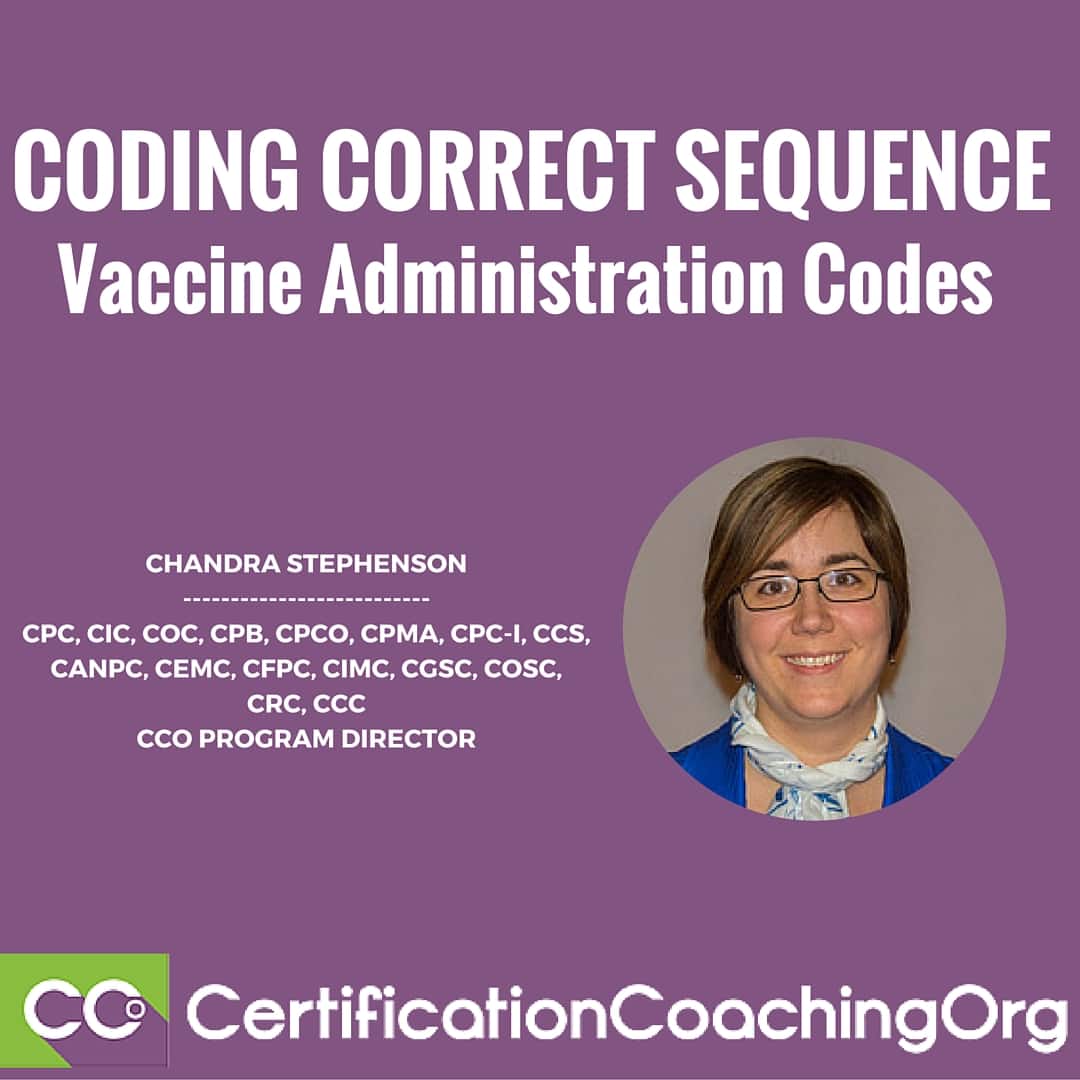Q: What should be the correct coding sequence about the vaccine? Do we code the vaccine first and then the administration code? Do we code the administration code first and then the vaccine? What is the correct sequence code?
A: For vaccine administration, what you’re going to find is there is no one set rule that says they have to go in this order. Now, most of the time when we think about multiple procedures and yes, a vaccination is considered a procedure, when we think about multiple procedures most of the carrier rules, most of the suggestion you’re going to find is, list them in RVU order, so you list the most expensive one to the least expensive one.
Here is the funny thing, the toxoid or the product, the actual vaccine that were injected, whether it’s Tdap or DTaP or a HeB or an influenza vaccine, anything like that, there’s no actual work RVU associated with those. The doctors don’t create those in their office, they purchase the product, so there’s no work RVU associated with it. If you will look it up and try to find the RVU oftentimes you get a big fat zero. The funny thing is, that’s usually the most expensive part of administering the vaccine, so most people would list the most expensive piece first, the different toxoids that they do, and then they list the administration fee.
VIDEO: Correct Coding Sequence of Vaccine Administration Codes


Before they do any of those, they list any E/M procedures that may have been performed. If we did a well-child visit and it was a preventive visit for that child, we would bill the E/M visit for the preventive visit, then we would bill our products, what vaccines did we give along with our administration codes? Remember when you get to the administration codes, you can only report one initial administration code per encounter. So, the very first vaccine they got, it doesn’t matter what route it was, you only get to bill one initial. The reason I say that, a lot of little kids we give them the nasal flu vaccine; that’s an intranasal administration. We might also give them another vaccine while they’re there and we might do that intramuscularly.
Those two codes when you look at the administrations, both have an initial code. They cannot have two initial administrations in the same visit, only one of them was truly given first. It doesn’t matter which one you gave first, if you gave the nasal first, you bill initial intranasal and then you bill an add-on for the intramuscular. If you gave the intramuscular first, you bill the initial intramuscular and the nasal as an add-on. You just don’t want to put two of those initials up against each other or they’ll bump out in your claim editing software.
I did want to remind you that not just with vaccines, but with any of your procedure codes. If you’re worried about sequencing, you’re trying to figure out the best order to put them in, you can always use that Physician Fee Schedule Lookup Tool – we went through that a few webinars ago. If you’re not familiar with it, I also go through it on the “Free CMS Did You Know” episode, that’s on our Facebook Live page. But I show you how to go look something up on the fee schedule. You can go to the CMS Fee Schedule and if it’s a procedure that CMS covers and that they price, they will give you the RVU associated with it so you can figure out which one is more expensive and what order they should go in. That’s a great tool to go out and use when you’re trying to answer the sequencing of procedure questions.
To recap and answer the question, when asked: What order do these vaccines need to go in? Do we list the product first or the administration first? There is no one set rule. You can list them in either order. Most people list the toxoid or the product first because it’s more expensive, then they list the administration code.
Laureen: Thank you.
Related Correct Coding Sequence of Vaccine Administration Codes Posts:
- Morphology Codes — What Are They Used For?
- EM Codes 99201 99205 – EM Coding Question
- Path and Lab 80300 80304 CPT Codes

![[CCO] Certification Coaching Organization LLC [CCO] Certification Coaching Organization LLC](https://www.cco.us/wp-content/uploads/2015/05/CCO-Logo-2015-d3-500px.png)